Grado PS1000 Review
Grado PS1000
The Grado PS1000 - a high-end headphone bargain at just over £1,800?
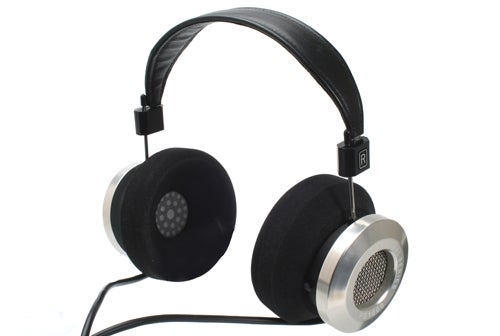
Verdict
Pros
- Jaw-dropping sound
- They make you feel like a king
- Superb build quality
Cons
- Jaw-dropping price
- They make you look like a bit of an idiot
- Very heavy
Key Specifications
- Review Price: £1835.00
- Metal and wood construction
- 3.5mm jack adaptor
- 5-50,000 Hz frequency response
- 32ohm impedance
Introduction
Some technology is so expensive that it’s almost impossible to talk about in terms of value. Retailing for just over £1,800 it’s safe to say the Grado PS1000 is just such an example. They are some of the most expensive non-custom headphones in the world, tripling what many people would already consider silly money for a pair of headphones, so can they possibly be worth the outlay? We set our ears to critical, donned the metal big boys and commenced hours of quizzical beard-stroking. Here’s what we think.
Grado PS1000 Design
The Grado PS1000 buck a few trends of standard headphone design. The leather clad headband is rather thin and weedy looking, while two delicate looking steel rods are all that hold the earpieces in place. The earpieces themselves and their foam surrounds are also enormous. What’s more there are no extras like removable cables or remote controls here – these are pure listening tools. With regards the latter, the cable is very thick and feels high quality, and should the worst happen, re-cabling is possible but it’s not the simple plug ‘n’ play operation that it is with the Sennheiser HD800.
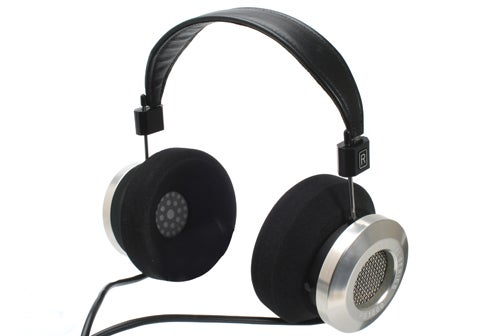
On top of the driver units sit huge foam pads that rest around your ears. These are the only elements of the Grado PS1000 designed to be perishable, with replacements costing around £60. That may seem – and indeed is – pricey for a few lumps of foam, but they utilise different densities to offer optimum comfort and stability, which is something they most certainly achieve. They’re so large and deep that there’s next to no contact between your ear and the earpiece or foam, meaning your ears never get squashed. What they can’t do, however, is stop the huge weight of the headphones pulling them from your head.
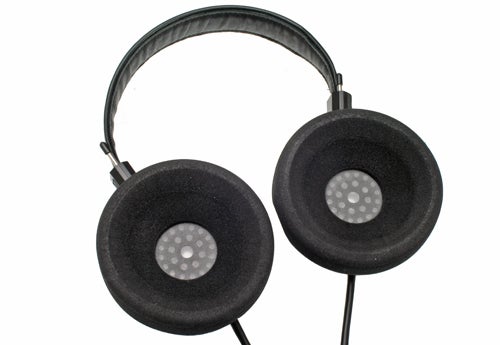
The back of each can is made from solid metal, with only the parts hidden by the foam pads built from the Grado staple, wood. And the result is a set of cans that weighs a hefty 500g – tip your head forward or back or turn it too swiftly and the headphones will come tumbling down. So solid are they that even the grilles that cover the open backs of each headphone feel like they could stop – or at least nicely julienne – a bullet.
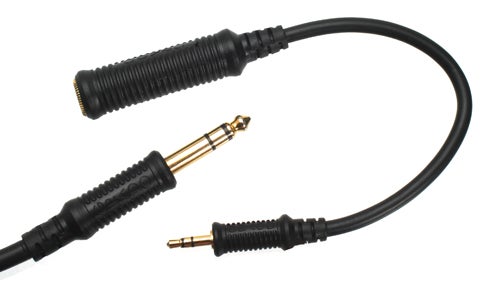
When on your noggin, they have a very distinct look that – while we wouldn’t call it stylish – is at least styled. If you dream of looking like an aircraft controller from the 1940s, these are the cans for you. Remove the foam pads though and they’re actually relatively petite.
A wood-rimmed speaker housing is glued into the metal base, which itself isn’t constrained into any particular angle by the headband. A deceptively tough antenna-like rod of metal sticks up into the headband, relying on simple friction to stay in place and allowing each speaker housing to be height adjusted and swivel through 360 degress. They have a tendency to slip, or at least sag, on your head if you move about a lot, but as already hinted at, these aren’t really headphones for on the move.
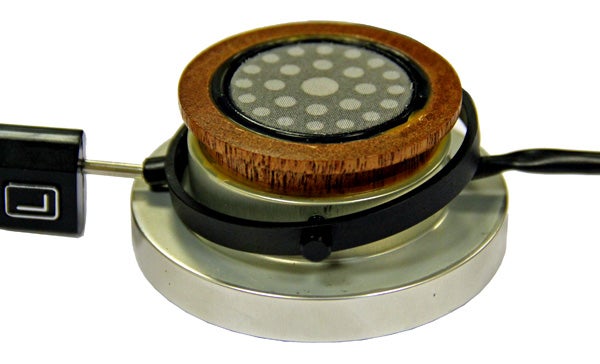
Another reason for wanting to keep these consigned to your abode is the open-back design that leaks a lot of sound. You can generally listen at normal volumes without completely annoying a whole office but the person sat next to you on the train might get somewhat miffed. All told, if you wear them out, you virtually deserve to be pointed at and ridiculed – they’ll double the width of most heads. Sat at home by your hi-fi, though, they’ll look the business. Oddly enough though, thanks to the high-efficiency drivers they’ll actually perform well plugged straight into your £30 MP3 player, so for portability they beat some other premium headphones that require an additional amp. The standard jack of the cable is a full-size 5.3mm one, but a 3.5mm converter extension cable is included too.
In the home then, the combination of the lightly but sufficiently padded headband, huge spacious foam pads, that ingenious self-adjusting metal rod and their airy open-back design means that despite their bulk these headphones are comfortable to wear for hours on end. Whether you’re sitting down for some extended relaxed listening or if you’re a musician that wants to practice all day without disturbing others, these couldn’t be better. What’s more, there’s a certain sense of smug satisfaction knowing that while they don’t necessarily look the part (except in a very utilitarian way), there’s one heck of a lot of cash sitting on your coconut when wearing these ‘phones. With their precarious weighty stance, it can almost feel like you’re wearing a crown.
Thanks to John Lewis for supplying our review sample.
Grado PS1000 Sound Quality
Prepare the drum roll. How good do the Grado PS1000s sound? Predictably, they sound utterly fantastic.
Most obviously they provide the open airy sound associated with their open-backed design, but also supply the voluminous bass that sets of this type often lack. The sheer volume and power of the low-end surprised us, even if Grado is known for the powerful, forward sound of its headphones. Put your hand over the grilles of one of the cans at decent volume and it’s not unlike placing your hand over the bass port of a subwoofer – you can feel the air being pushed out.
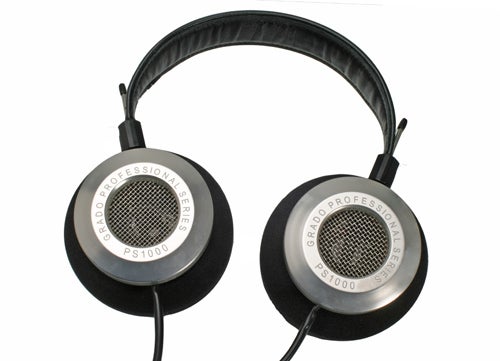
If you have tried the Sennheiser HD800 and found them a little light in the low end, the Grado PS1000 are an excellent alternative. They do cost around £800 more though – hardly small change however you look at it.
This bass, which extends very deep (these ‘phones have an astonishing 5-50,000Hz frequency range, compared to a more typical 20 – 20,000Hz) as well as offering huge presence, doesn’t infringe upon the rest of the frequency bands either, as you might expect of a lesser headphone. Here there’s just so much space that each frequency band can stretch its legs without invading another’s space.
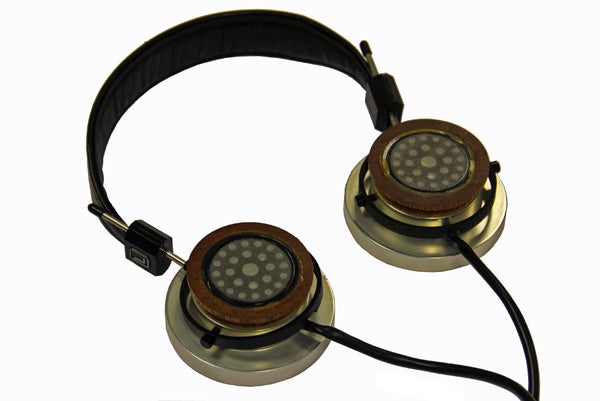
This aural impression of spaciousness is provided on two fronts – sound stage and sheer detail. An open, airy sound is common to virtually all decent open-backed headphones, but the sound stage is particularly wide here. Normally when we talk about detail in our headphone reviews, we’re referring to the high-end – where the finest sonic details are expressed – but in the Grado PS1000 the level of detail across the board is stunning. Separation is incredible, letting you perceive discrete instruments and other sonic elements much more clearly than you would even with an excellent pair of £200-500 headphones.
Assessing particular genres that work well with the Grado PS1000 sound is something of a fool’s errand, because it’s rare to find anything it doesn’t excel at, and enhance. Classical orchestrations sound full and lush, and beautifully refined when they need to be. Strings are sweet and textured, and the orchestral “hits” of brass and string sections are imbued with a power that’s rare to hear outside of a concert hall.
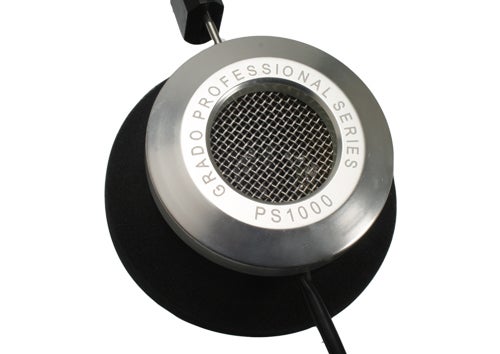
Similarly, the distorted guitars and insistent drums of Queens of the Stone Age’s Songs for the Deaf album are doubtless powerful enough to put a smile on singer Josh Homme’s face. We noticed precious few sonic slip-ups. The only criticism we could muster was that the PS1000 bass was occasionally a little too ripe for drone-y indie music, such as The Pains of Being Pure at Heart’s Belong, where we’d have dialled back the low end a notch or two given the choice.
Smooth, insightful and as high-end a headphone as we’ve ever heard, where most high-end headphones let you hear the proverbial strings, the Grado PS1000 lets you hear between them too. Some may still prefer a set with lighter bass, such as the Sennheiser HD800 or Audio Technica ATH-W5000, as their lighter sound can supply a slightly greater impression of “airiness”, but to call them categorically better is plain wrong – no other headphone we’ve tested comes close to replicating the full range, detail and clout of a high-end Hi-Fi. What’s more, the refinement of the sound means these cans never sound tiring. Not only are they physically comfortable enough to wear for hours, your inner-ears will also love every moment.
Grado PS1000 Value
On the subject of value, the Grado PS1000 are a tough sell. They’re a lot more expensive than the HD800, Sennheiser’s top-end model, the Denon AH-D7000 and the Audio Technica ATH-W5000, not to mention Grado’s own GS1000 (a snip at £1,000). The only mainstream headphone that can compete in sheer price tag terms is the Ultrasone Edition 10, which retails for roughly the same price. When matched with the right amp, some claim it’s the best set of headphones in the world.
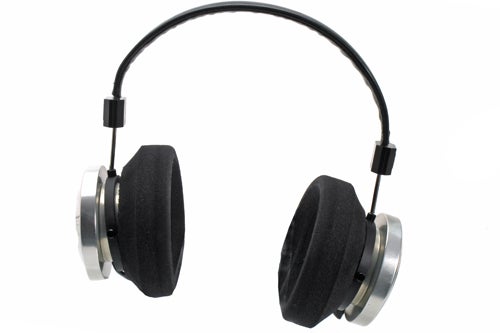
However, it’s also a trickier set whose aggressive treble can turn sibilant. The extremely efficient and easy-to-drive PS1000, on the other hand, can even be powered by a lone MP3 player with still immensely enjoyable results. For the best output you will want to plug it into a nice valve headphone amp, to add a touch of that valve warmth. It’s worth noting, though, that we tried it with a powerful solid state amp and could barely turn the volume dial without risking hearing damage – that’s how sensitive they are.
Verdict
The Grado PS1000 are one of the most expensive pairs of headphones you’ll find, but they’re also one of the best. Powerful bass, wonderfully subtle-but-intense levels of detail and an incredible soundstage make this pair an unbridled joy to listen to, no matter what musical genre you throw at them.
Drawbacks are few, but that price is something that’s hard to swallow when key rivals like the Sennheiser HD800 cost significantly less. However, with a superb metal and wood build, these headphones are built for life.
Trusted Score
Score in detail
-
Value 7
-
Design & Features 9
-
Sound Quality 10
Features
| Type | Enclosed (Circumaural) |
| Wireless | No |
| Noise Cancelling | No |
| Microphone | No |
| Inline Volume | No |
| Number of Drivers (Times) | 1x |
| Modular Cabling | No |
| Remote Control | No |
| Frequency Range | 50-50khz |


